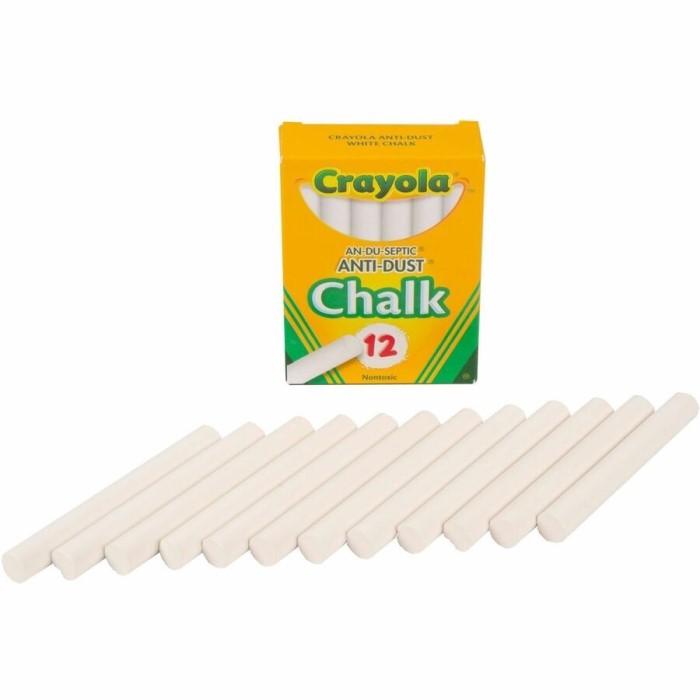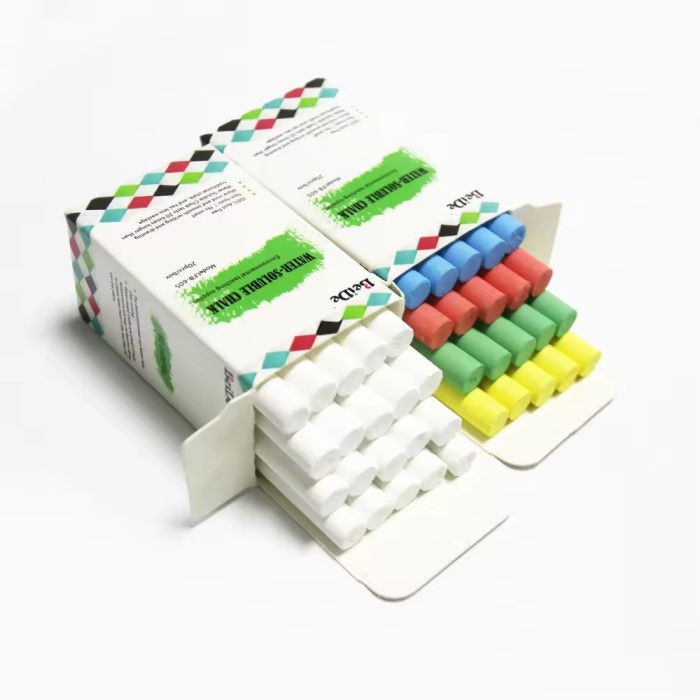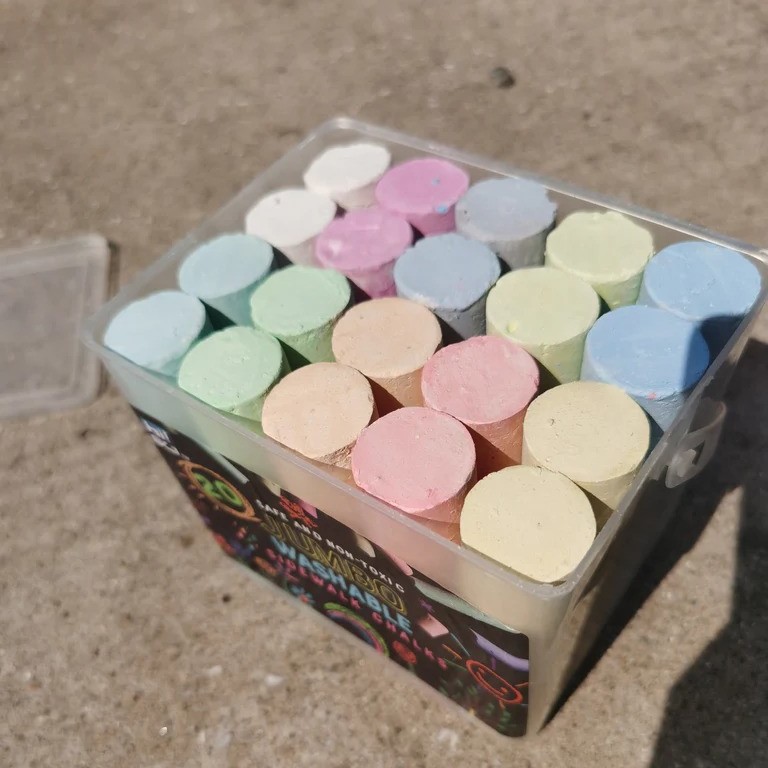Introduction
Non toxic chalk has become increasingly popular for parents and educators seeking safe art supplies for children. This type of chalk is designed specifically for kids, ensuring that it is free from harmful chemicals and irritants. With colorful options available, non toxic chalk not only sparks creativity but also provides peace of mind for caregivers. This article serves as a comprehensive guide to crafting with safe and non toxic chalk for kids. In it, you’ll find unique ideas, tips, and activities to inspire little artists.

What Makes Chalk Toxic?
Chalk may seem harmless, but some types can contain harmful ingredients. These toxic components can pose risks, especially to children who are prone to put things in their mouths. Understanding what makes chalk toxic is essential to ensure safety for kids.
Common Harmful Ingredients in Chalk
- Lead: Lead is toxic and dangerous, especially for children. It can cause serious health issues, including cognitive and developmental problems.
- Heavy metals: Some chalk varieties may contain heavy metals like cadmium or mercury. These are harmful if ingested or inhaled.
- Talc: Talc in chalk can sometimes be contaminated with asbestos. Asbestos exposure can lead to lung-related diseases.
- Synthetic additives: Chemical dyes and artificial fragrances may be present in some chalks. These can cause skin irritation or allergic reactions.
Identifying chalk with these harmful ingredients is crucial. Always check product labels carefully before purchasing.
Risks of Using Toxic Chalk
- Health Risks: Toxic chalk can lead to respiratory and skin issues. When dust from harmful chalk is inhaled, it may irritate the throat or lungs.
- Ingestion hazards: Young children might accidentally chew on chalk. Ingesting toxic chalk can affect their digestive systems and overall health.
- Allergies: Synthetic dyes and fragrances may lead to allergic reactions. Symptoms can include rash, itching, or breathing difficulties.
- Environmental Impact: Toxic chalk may release harmful substances into the soil and water when discarded. This can damage ecosystems and harm wildlife.
By understanding the ingredients and risks associated with toxic chalk, parents and caregivers can make safer choices for their children. Opt for non-toxic chalk to ensure safety while promoting creative and fun activities for kids.
Benefits of Non-Toxic Chalk for Children
Providing children with non toxic chalk comes with numerous benefits. These types of chalk are safer, healthier, and environmentally friendly, making them an ideal choice for kids’ creative activities. Let’s explore these benefits in detail.
Health and Safety Considerations
- Reduced health risks: Non toxic chalk lacks harmful substances like lead, heavy metals, or asbestos. This lowers the risk of health problems caused by ingesting or inhaling toxic dust.
- Gentle on skin: Non-toxic chalk is made without synthetic dyes or fragrances. This prevents skin irritation and allergic reactions, keeping kids comfortable while they play.
- Safe for accidental ingestion: Young children often put things in their mouths. Non-toxic chalk ensures there are no harmful consequences if accidentally swallowed.
- Low dust production: Many non-toxic chalk options produce minimal dust. This reduces the chances of respiratory irritation during use, making it ideal for sensitive individuals.
Environmental Advantages
- Biodegradable and eco-friendly materials: Non-toxic chalk is often made from natural materials like calcium carbonate or plant-based ingredients. These decompose safely, reducing negative impacts on the environment.
- No harmful chemicals: Non-toxic chalk does not release dangerous substances into soil or water during disposal, protecting plants and animals.
- Sustainable production: Many manufacturers of non toxic chalk focus on sustainability, reducing waste and environmental harm during production.
- Supports eco-conscious choices: By choosing non toxic chalk, parents can teach kids about making environmentally responsible decisions.
Choosing non-toxic chalk prioritizes safety and sustainability. It creates a worry-free environment for children to explore their creativity and helps conserve our planet’s health.
Choosing the Best Non-Toxic Chalk
Selecting the best non toxic chalk is essential for ensuring the safety of children. By understanding key factors to consider, you can make informed decisions and avoid products with harmful substances.
Ingredients to Look for in Safe Chalk
- Natural Materials: Choose chalk made primarily from natural ingredients like calcium carbonate or gypsum. These are safe and free from harmful chemicals.
- No Heavy Metals: Ensure the chalk does not contain lead, cadmium, mercury, or other toxic metals.
- Free from Synthetic Additives: Avoid chalk with artificial dyes, fragrances, or any chemical preservatives.
- Talc-Free: Talc can sometimes be contaminated with asbestos. Pick chalk that explicitly states it’s talc-free.
- Non-Toxic Labeling: Look specifically for products labeled as “non-toxic.” This indicates safer materials have been used.
Understanding the ingredients ensures you pick chalk that is safe for kids to use while enjoying their creativity in a worry-free way.
Certifications and Labels to Consider
- ASTM Certification: Check for ASTM D4236 certification. This ensures the product has been tested for safety.
- CE Mark: Look for CE labeling, indicating the chalk meets EU safety standards.
- Non-Toxic Certification: Many manufacturers display third-party non-toxic certifications. Prioritize products carrying these labels.
- Eco-Friendly Certifications: Consider chalk with green certifications that guarantee sustainable and environmentally-friendly practices.
- Manufacturer Transparency: Brands that provide detailed ingredient lists and safety testing information are more trustworthy.
Certifications and clear product labeling simplify the process of choosing safe chalk. Use these guidelines to protect your kids’ health and promote eco-conscious choices.
Types of Non-Toxic Chalk Available
Non-toxic chalk comes in various types to suit different uses and preferences. Understanding the options helps parents pick the best fit for their kids. Below, we explore two popular varieties.
Standard Chalk Options
Standard chalk is the traditional type used on blackboards. It is usually made of calcium carbonate or gypsum, ensuring safety for children.
- Classroom use: Standard non-toxic chalk is ideal for teaching purposes. It’s safe and effective for writing.
- Low dust formula: Many non-toxic standard chalk types produce minimal dust, reducing respiratory irritation.
- Convenient size: These sticks are small, making them great for kids’ hands.
- Bright colors: Available in a wide range of hues, they encourage creativity and better learning experiences.
Standard chalk is a reliable and safe choice for both educational and creative activities.
Sidewalk and Jumbo Chalk Variety
Sidewalk and jumbo non-toxic chalks are larger and designed for outdoor and playful activities. They are made with child-safe materials too.
- Large size for easy grip: Jumbo chalk is perfect for small hands to hold and use.
- Bold and vibrant colors: These chalks come in bright shades to enhance outdoor creativity.
- Durable for rough surfaces: Sidewalk chalk is tailored for asphalt, concrete, and other outdoor surfaces.
- Easy to clean: Most non-toxic sidewalk chalk washes away easily with water, leaving no stains.
- Fun shapes available: Some brands offer uniquely shaped chalk, adding more fun to playtime.
Both standard and sidewalk/jumbo chalk options provide kids with safe and enjoyable creative tools. Choosing the right non-toxic chalk ensures fun without compromising safety, whether inside or out.
DIY Non-Toxic Chalk Recipes
Making your own non-toxic chalk is simple and fun. It ensures safety and creativity for kids. Homemade chalk uses natural ingredients, avoiding harmful chemicals found in some store-bought varieties. Let’s explore easy methods to create chalk at home.
Simple Recipes for Homemade Chalk
- Basic Calcium Carbonate Chalk:
- Ingredients: Calcium carbonate powder, water, food coloring.
- Steps: Mix calcium carbonate powder and water to form a paste. Add food coloring for desired shades. Mold into shapes and let dry overnight.
- Plaster of Paris Recipe:
- Ingredients: Plaster of Paris, water, natural dye.
- Steps: Combine Plaster of Paris with water to create a thick mixture. Stir in natural dye for colorful chalk. Pour into molds and let it harden for 24 hours.
- Cornstarch Chalk:
- Ingredients: Cornstarch, water, baking soda, food coloring.
- Steps: Blend cornstarch and water into a thick paste. Add baking soda and food coloring. Shape into sticks or use molds. Dry for 1-2 days.
These recipes are easy and safe. You can customize colors and sizes to fit your creativity.
Tools and Ingredients Needed
To create non-toxic chalk at home, gather simple and safe supplies:
- Basic Tools:
- Mixing bowl and spoon
- Measuring cups
- Molds for shaping
- Natural Ingredients:
- Calcium carbonate powder or Plaster of Paris
- Cornstarch
- Baking soda
- Natural dyes or food coloring
- Optional Supplies:
- Gloves for handling paste
- Wax paper or parchment for drying
- Storage containers for finished chalk
Having these tools and ingredients ready makes the chalk-making process smooth and enjoyable. Remember to supervise kids during preparation to avoid any accidents.
Homemade non-toxic chalk is a great creative activity. It allows families to bond while ensuring safety.
Safety Tips When Using Chalk for Kids
Using non-toxic chalk is essential, but safety measures should still be taken. Parents can ensure safe playtime and creative activities with some precautions. By following these tips, children can enjoy using chalk without any risks.
Supervision and Monitoring
- Always supervise young children: Keep an eye on kids while they play with chalk to prevent ingestion.
- Teach proper usage: Explain not to put chalk in their mouths or rub it on their faces.
- Watch for allergies: Check for skin rashes or breathing issues after chalk use.
- Limit exposure: Avoid prolonged usage to reduce the risk of skin or respiratory irritation.
- Encourage handwashing: Children should clean their hands immediately after using chalk.
Proper Storage and Handling
- Store chalk in a dry place: Keep chalk away from moisture to prevent deterioration.
- Use child-safe containers: Place chalk in secure containers that children cannot easily spill.
- Keep chalk out of reach: Store chalk out of reach of toddlers to avoid accidental ingestion.
- Label hazardous items clearly: If mixed with toxic markers or supplies, safely separate and label them.
- Dispose of broken pieces: Broken chalk may pose a choking hazard and should be thrown away promptly.
With supervision and proper storage, kids can safely enjoy their creative activities. These simple tips protect both their health and your peace of mind.
Fun Activities for Kids with Non-Toxic Chalk
Non-toxic chalk is not just safe but also a fantastic tool for fun and learning. It enables kids to explore their creativity while staying entertained. Here are a few activities that children can enjoy using non-toxic chalk:
Creative Drawing Exercises
Sidewalk Art
- Vibrant Expression: Allow children to explore their creativity by drawing on sidewalks, driveways, or patios using bright sidewalk chalk.
- Variety of Designs: Encourage kids to create a range of designs, including hopscotch grids, which can be both fun and physical.
- Visual Stories: Inspire them to make mazes that challenge their friends, or create elaborate artwork, showcasing their imagination and artistic skills.
Storytelling Through Art
- Character Development: Encourage kids to sketch their favorite characters from books, movies, or even their own imaginations on a chalkboard or pavement.
- Scene Creation: Guide them to depict scenes or stories in a sequential manner, allowing them to narrate their narratives visually.
- Interactive Storytelling: This activity can also include sharing their drawings with others, fostering communication and exposition among peers.
Nature-Inspired Drawings
- Exploring Nature: Engage children to observe the natural world and use bright, colorful chalk to sketch elements like trees, flowers, and animals.
- Botanical Details: Encourage them to focus on details, such as the unique shapes of leaves and the vibrant colors of various flowers.
- Integrating Education: This can be an educational experience—discuss the different species and their habitats while they create.
Stencil Art
- Easy Design Creation: Introduce the use of stencils to children, making it easier for them to create fun and intricate designs with chalk on various surfaces.
- Diverse Patterns: Stencils can range from simple shapes like stars and hearts to more complex designs like animals or floral patterns.
- Fine Motor Skills: This activity enhances their hand-eye coordination as they learn to use the stencils carefully to achieve their desired designs.
Wall Murals
- Expressive Projects: If permitted, let kids draw large pictures on outdoor walls to create temporary murals, giving them a sense of ownership and pride in their art.
- Collaboration Opportunities: Encourage teamwork by having multiple children contribute to a single mural, fostering collaboration and a sense of community.
- Community Engagement: These murals can also beautify local spaces and offer an opportunity for kids to engage more broadly with their community.
Create Outdoor Games
- Interactive Fun: Draw classic games like tic-tac-toe or “Four Square” on pavement using chalk to combine artistic creativity with interactive play.
- Engagement with Peers: These outdoor games encourage children to engage with their friends, promoting social skills and healthy competition.
- Physical Activity: Incorporating physical games promotes movement, allowing children to exercise while enjoying the benefits of creative chalk artwork.
Educational Uses for Non-Toxic Chalk
- Writing Practice: Use a blackboard or paved surface for practicing alphabet, numbers, or new vocabulary.
- Math Games: Draw numbers, shapes, or equations to solve math problems in a fun way.
- Color Identification: Use colored chalk to teach young kids about colors and shades.
- Science Experiments: Mix creativity and science by creating a scaled solar system or other diagrams on the floor.
- Word Games: Draw word puzzles like crosswords or Hangman to improve language skills.
- Geography Fun: Sketch a map of the world and teach kids about continents, countries, and landmarks.
These activities foster creativity and make learning fun. With non-toxic chalk, kids can freely play without compromising their health. Let their imagination soar safely!
Conclusion: Embracing Creativity with Non Toxic Chalk
In conclusion, crafting with non toxic chalk offers a wealth of opportunities for children to express their creativity safely. From crafting sidewalk art to exploring innovative techniques, the possibilities are endless. By choosing non toxic chalk, parents and caregivers can provide engaging activities that foster artistic skills while ensuring safety. Embrace this colorful medium and watch as kids create vibrant artworks that inspire their imagination. With proper guidance and encouragement, children can unleash their creativity, making art an essential part of their playtime. Remember to prioritize non toxic chalk to keep creativity safe and fun!



